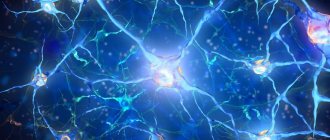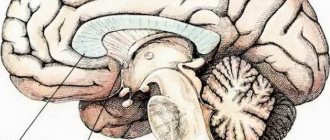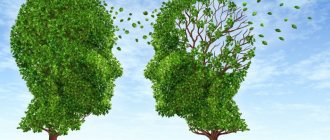An increase in body temperature is an important symptom of many diseases, but in some cases it is not possible to determine the exact origin of the fever.
You need to know that fever of unknown origin according to ICD 10 has the code R50 . The International Classification of Diseases, Tenth Revision, is used by medical practitioners to prepare medical documentation. Fever of unknown origin is considered a serious pathological condition that requires timely diagnosis and proper treatment, therefore, with a prolonged increase in body temperature, you should consult a doctor and undergo a comprehensive examination.
What is angioedema?
This pathology is often called angioedema, named after the doctor who first described it. Among doctors, the pathology is also called giant urticaria, and sometimes allergic acute edema.
Angioedema - what is it? Angioedema is an allergic reaction to an irritant (allergen). More often it affects the face and pharynx, but sometimes it also affects internal tissues, even the meninges. No one is immune from the danger of developing such a pathology. Therefore, everyone needs to know about it.
I swell all the time. Angioedema
Causes and mechanism of development
Edema develops when an allergen enters the body. Under its influence, vascular permeability increases. From them, blood plasma enters neighboring tissues. As a result, most often the upper part of the body swells greatly.
Various reasons provoke such a reaction:
- animal hair;
- plants;
- dust on the street or inside the apartment;
- various household chemicals;
- low-quality or expired cosmetics;
- food products;
- stress;
- insect bites;
- medications.
Among the drugs that cause such a reaction, a special place stands out: aspirin, penicillin and its analogues, bromide.
Kinds
Classification of angioedema:
- Allergic . It is dangerous because the symptoms develop suddenly, are unpredictable, and cannot be prevented.
- Hereditary angioedema. This type of pathology is rare. Provocation by allergens is not required for its appearance. Seizures occur spontaneously in the absence/deficiency of inhibitors of enzymes of the complement-dependent system in the blood. The danger is that the larynx swells, and this leads to suffocation.
Additional species, the mechanism of which is poorly understood:
- Vibrating. Occupational pathology that appears some time after exposure to vibration.
- After physical activity . It occurs after physical exercise, which is sometimes associated with the work of the autonomic system.
- From squeezing . Swelling occurs with increased load on the tissues of certain parts of the body.
- Reaction to cold . It manifests itself as damage to open areas of the body under the influence of low air or water temperatures.
Hereditary form (HAE)
This is a special genetic type of edema.
The cause is the inheritance of gene mutations. HAE occurs due to a lack or unpredictable action of C1, an inhibitor of certain enzymatic reactions in the body. Attacks occur at any time, causing suffocation. HAE occurs when the immune response of a group of proteins in the complement system does not function properly in the body. This type of edema is also called idiopathic. An attack can be caused by stress, a lack or excess of hormones, or microtrauma.
Hereditary angioedema. Glad. Biysk, Russia.
ICD 10 code
Angioedema is indicated in the unified plan for diagnostics and treatment of the international classifier among the adverse effects with the designation T78.x.
So T78.3 is precisely angioedema - code according to ICD 10, T78.0 is anaphylactic shock. Other numbers after the dot also characterize similar pathologies, such as allergic reactions.
Etiology
Dengue fever
Prolonged fever can be of various etiologies:
- changes in hormonal levels during pregnancy;
- lack of physical activity;
- weakened immune system;
- thermoneurosis;
- the presence of infections in the body;
- cancer diseases;
- the presence of autoimmune diseases;
- presence of toxoplasmosis;
- vegetative-vascular dystonia;
- presence of tuberculosis;
- presence of brucellosis;
- helminthiasis;
- inflammatory processes in the body;
- sepsis;
- diseases of the endocrine system;
- anemia;
- long-term medication use;
- AIDS;
- intestinal diseases;
- viral hepatitis;
- psychogenic factor;
- Addison's disease.
The most common cause of low-grade fever is the course of the inflammatory process in the body caused by a number of infectious diseases:
- ARVI;
- acute respiratory infections;
- bronchitis;
- tonsillitis;
- otitis;
- pharyngitis.
With hyperthermia of this kind, there are additional complaints about health, but when taking antipyretic drugs it becomes much easier.
Low-grade fever of an infectious nature manifests itself during exacerbation of the following chronic pathologies in the body:
- pancreatitis;
- colitis;
- gastritis;
- cholecystitis;
- cystitis;
- urethritis;
- pyelonephritis;
- inflammation of the prostate;
- inflammation of the uterine appendages;
- non-healing ulcers in older people, in people with diabetes.
Post-infectious low-grade fever can last for a month after the disease is cured.
An increase in temperature due to toxoplasmosis, which can be contracted from cats, is also a common problem. Some products (meat, eggs) that have not undergone heat treatment can also become a source of infection.
The presence of malignant neoplasms in the body also causes low-grade fever due to the entry into the blood of endogenous pyrogens - proteins that provoke an increase in human body temperature.
Due to intoxication of the body with indolent hepatitis B, C, a febrile state is also noted.
There have been cases of increased body temperature when taking a certain group of drugs:
- thyroxine preparations;
- antibiotics;
- neuroleptics;
- antihistamines;
- antidepressants;
- antiparkinsonian;
- narcotic painkillers.
To get rid of the temperature, it is recommended to discontinue the drug that contributed to its increase.
Low-grade fever with VSD can occur in children, adolescents, and adults due to a hereditary factor or injuries received during childbirth.
Symptoms of angioedema
Angioedema symptoms vary depending on the type and causes that cause it. More often, the attack develops acutely, within a couple of minutes. Rarely does it grow for 2–4 hours. Swelling is usually localized on the face, often on the eyelids. The type of pathology is determined precisely by the location. So, with swelling of the submucosal tissues of the gastrointestinal tract, the patient develops:
- pain in the peritoneum;
- nausea with vomiting;
- disturbances in the process of defecation.
If the larynx swells, the patient typically breathes convulsively, deviations in the correctness of speech, and hoarseness are noticeable.
Sometimes swelling of other organs is observed:
- pleura;
- lower organs, urine excretory system;
- brain, tissues around;
- joints;
- muscle tissue.
In half of the patients, the disease is accompanied by urticaria and anaphylactic shock.
HAE first manifests itself before the age of twenty and is inherited. It grows slowly, the tissues return to normal in more than a week. More often it manifests itself as swelling of the nasopharynx or gastrointestinal tract. This type often recurs, occurring several times a year for various reasons, ranging from stress to microtrauma.
General clinical picture
Symptoms:
- At the beginning of development, the patient feels a lack of air and hoarseness occurs.
- With the development of pathology, local swelling of the skin, tissue underneath or mucous membrane is formed, combined with urticaria.
- Swelling is often accompanied by anaphylactic shock.
- It can develop on any organ, although it is more often localized on the face, limbs, external genitalia, for example, in the scrotum in men.
- The most dangerous is swelling of the larynx, which results in suffocation.
- The stage of asphyxia quickly sets in.
Swelling of the face, eyelids, larynx
Angioneurotic pathology or Quincke's edema is the body's response to allergens, accompanied by swelling of the face, eyelids so that it is difficult to open the eyes, and the laryngeal mucosa. The most common irritants:
- fungal spores;
- plant pollen;
- products;
- household substances;
- medicines, drugs;
- alcohol;
- insect and parasite bites;
- ultra-violet rays.
There are other allergens, but they are rare. Manifestations: swelling of the eyelids, face, oropharynx and nasopharynx.
Symptoms of swelling of internal organs
In addition to visible external swelling, allergic swelling inside the body often develops, which makes diagnosis difficult. Swelling of an internal organ is said to be:
- paroxysmal severe pain in the peritoneum;
- development of a lump or tumor on the chest, creating pressure on the chest;
- simultaneous appearance of vomiting and diarrhea.
Signs of cerebral edema
Sometimes doctors have to deal with cerebral edema, manifested by the following symptoms:
- muscle rigidity at the back of the head (characterized by the fact that the patient cannot touch the chin to the body);
- lethargy;
- lethargy;
- nausea accompanied by vomiting;
- frequent muscle cramps.
Urinary incontinence in women. Clinical guidelines
- urinary incontinence
- stress urinary incontinence
- Urgent urinary incontinence
- overactive bladder
CI – confidence interval
IVO – bladder outlet obstruction
UTI - urinary tract infection
CT – computed tomography
CUDI - complex urodynamic study
ml – milliliters
MRI – magnetic resonance imaging
UIUI - stress urinary incontinence
POP – pelvic organ prolapse
SUI – stress urinary incontinence
UUI – Urgent Urinary Incontinence
Ultrasound – ultrasound examination
ICS – International Continence Society (English)
TVT – tension free vaginal tape (English)
p – statistical probability of error (English)
Urinary incontinence is a patient’s complaint about any involuntary discharge of urine from the urethra.
Stress urinary incontinence (stress incontinence) is a patient’s complaint of involuntary release of urine from the urethra during physical exertion, coughing and sneezing.
Imperative (urgent) urinary incontinence is a patient’s complaint of involuntary release of urine from the urethra with an intense imperative urge to urinate.
A voiding diary is a recording of the frequency and volume of urination over a specified period of time.
The TVT operation is an operation using a free synthetic suburethral loop.
1.1 Definition
Urinary incontinence is a serious social and medical problem [1, 2] in Russia and throughout the world. Urinary incontinence occurs when the pressure in the bladder exceeds the pressure inside the urethra.
Extraurethral involuntary leakage of urine may be associated with congenital or acquired defects of the ureter, bladder or urethra, for example, with exstrophy of the bladder (congenital absence of its anterior wall), total urethral epispadias (absence of the anterior wall of the urethra), total urethral hypospadias (lack of posterior wall of the urethra), ectopia of the ureteric orifices with their unusual location, for example in the urethra or vagina.
Acquired defects leading to false urinary incontinence are usually associated with trauma, as a result of which the integrity of the urinary tract is disrupted, followed by the formation of urinary fistulas that open onto the skin, vagina or rectum. True urinary incontinence, as defined by the International Continence Society (ICS), is “an involuntary loss of urine that is objectively demonstrable and causes social and hygienic problems” [3, 4].
Neurogenic urinary incontinence occurs with damage to the spinal cord, spina bifida, advanced cystitis, complicated by shrinkage of the bladder. True stress urinary incontinence can appear with a change in body position, physical activity of varying severity, i.e. with an increase in intra-abdominal pressure. It is caused by a decrease in the tone of the pelvic floor muscles and weakening of the bladder sphincters.
Stress urinary incontinence can be of two main types: a disease associated with dislocation and weakening of the ligamentous apparatus of the unchanged urethra and urethrovesical segment, which refers to anatomical urinary incontinence, and a disease associated with changes in the urethra itself and the sphincter apparatus, leading to disruption functions of the closure apparatus.
Urge incontinence is caused by involuntary contractions of the bladder. This condition may be associated with neurogenic problems such as decreased inhibitory control from the central nervous system or abnormal urothelial function, which can lead to activation of bladder afferent reflexes.
1.3 Epidemiology
Epidemiological data presented by the International Continence Society (ICS) show that stress urinary incontinence (SUUI) is widespread in the United States [2] and European countries, where 34 to 38% of women suffer from this condition.
N39.3 – Involuntary urination.
1.5 Classification
According to the classification of the International Continence Society (ICS), the following types of urinary incontinence are distinguished [1]:
- stress incontinence, or stress urinary incontinence, is the involuntary release of urine due to a sudden increase in intra-abdominal pressure and insufficiency of the urethral sphincter apparatus, which occurs when coughing, sneezing, physical exertion, etc.;
- imperative (urgent) incontinence - involuntary release of urine with a sudden unbearable imperative urge to urinate, caused by involuntary contractions of the detrusor. Most often serves as a manifestation of an overactive bladder [3];
- mixed (combined) urinary incontinence is accompanied by symptoms of both stress and urgency incontinence. The described types of urinary incontinence are the most common, but there are several more rare types;
- enuresis, or bedwetting, occurs during sleep;
- situational incontinence - involuntary loss of urine under various circumstances, for example, during sexual intercourse, laughter, etc.;
- urinary incontinence when the bladder is full (paradoxical ischuria).
We suggest you read: How much magnesium do pregnant women need per day? Daily value of magnesium for women and men
To determine the severity of stress urinary incontinence, the international classification proposed and modified by McGuire and J. Blaivas in 1988 is currently used. This classification is recommended for use by the International Continence Society (ICS) and is generally accepted.
In clinical practice, D.V.’s classification, which is simpler and more acceptable for practical healthcare, is widely used. Kahn (1978), determining the degree of stress urinary incontinence. According to D.V. Kanu, there are 3 degrees of urinary incontinence: mild, moderate and severe [4].
In mild cases, involuntary urine leakage is noted only during a sharp and sudden increase in intra-abdominal pressure: severe coughing, fast walking. In this case, the loss of urine is calculated in just a few drops.
In severe cases, patients completely or almost completely lose urine even when changing body position.
Spontaneous passage of urine during coughing, sneezing, exercise, and/or urinary urgency.
Examination and treatment of diseases such as urinary incontinence require a comprehensive approach. Many factors can influence the manifestation of the disease in a particular person. Some of them can cause urinary incontinence and affect the choice of method and the success of treatment.
• Assessment of general condition
- Presence of urinary tract and colon symptoms or urogenital prolapse, severity, duration and degree of concern. Identifying symptoms in the relevant organs and systems is critical for effective treatment planning. It is advisable to use validated questionnaires to assess symptoms.
- The impact of any symptoms on sexual function: confirmation by questionnaire data, including the impact on quality of life, helps to adequately assess the patient’s condition.
- Presence and severity of symptoms, including neurological disease.
- Collect data on previous medical, medical and surgical treatments, in particular how they affect the genitourinary tract and colon. The effectiveness and side effects of previous treatments should be noted.
- Identification of concomitant diseases that can have a huge impact on the development of urinary or fecal incontinence and urogenital prolapse. For example, patients with bronchial asthma will suffer from stress urinary incontinence during attacks. Some illnesses can also cause changes in urinalysis, especially in frail older people.
- Identifying medications the patient is taking for other conditions, as it is important to understand whether these medications are contributing to urinary incontinence.
- Obstetric and menstrual history.
- Detecting physical damage and injury.
- Environmental issues: These may include the social, cultural and physical environment.
- Lifestyle (including exercise, smoking, amount and type of food/liquid intake).
• Other issues influencing treatment choice
- It is necessary to take into account the patient's desire to be treated and continue treatment.
- Treatment goals and expected results.
- Support systems for patients (including caregivers).
- Cognitive function: All patients should be assessed for their ability to fully describe their symptoms - in relation to anxiety, impact on quality of life, their preferences and goals for care, and understanding of proposed assessment and treatment plans, discussion where appropriate, alternative treatment options.
In some patient groups, formal testing is important.
For example, testing cognitive functions in patients with possible memory and/or attention impairments that may affect responses (Table 1).
If the patient is unable to make treatment decisions on his own, family members and caregivers may be involved in discussing the patient's medical history, treatment goals, and care.
Table 1 - Differential diagnosis of urgency (caused by an overactive bladder) and stress urinary incontinence based on subjective manifestations of the disease
| Symptoms | Urgent urinary incontinence | Stress urinary incontinence |
| Urgent (imperative) urges | Yes | No |
| Repeated interruptions of sleep at night caused by the urge to urinate | Often | Rarely |
| Ability to get to the toilet in time after the urge | No | Yes |
| Amount of urine during each episode of incontinence | Big | Small |
| Incontinence when coughing, laughing, sneezing, etc. | No | Yes |
The more complex the medical history and the more extensive and/or invasive the proposed therapy, the more complete the examination should be.
Depending on patients' symptoms and their severity, there are a number of components in the evaluation of patients with urinary incontinence and/or pelvic organ prolapse.
In addition to the patient's general condition, mental status, body mass index, and level of physical activity should be assessed.
Abdominal examination: palpation of the abdomen, bladder area, identification of postoperative scars.
Diagnosis of angioedema
Attention! It is unacceptable to start treatment just like that. It is necessary to conduct a complete diagnostic examination, and as quickly as possible.
But it’s not always clear where to go for diagnosis.
Which doctor should I contact?
If you suspect a pathology, you need to call an ambulance, because swelling often develops in an unpredictable way. If you go to the hospital faster, the primary examination is carried out by a therapist. In the future, consultation with an allergist is necessary.
Types of examinations
When diagnosing, the doctor:
- analyzes the symptoms, the patient’s condition, studies the medical history (frequency of attacks, if this is not the first time, where they are located, whether the history contains signs of difficulty breathing, etc.);
- carries out pulse measurement (frequency, uniformity), measures blood pressure;
- examines the skin, looks for areas of edema.
After the swelling subsides, tests are performed to determine the cause of the allergy.
Necessary tests
In case of angioedema, blood is taken for a general detailed biochemical analysis and for immunoglobulin E in the blood.
Treatment
To determine how to treat depressive neurosis, a consultation with an experienced psychotherapist or psychiatrist is necessary, who will help identify the individual life characteristics of a particular medical history. Treatment of depressive neurosis is carried out using psychotherapy in combination with medications. There are various psychotherapeutic approaches: suggestive methods (suggestion and hypnosis), psychoanalysis (based on the unconscious sphere), the existential method (understanding goals in life during consultations), etc. A psychotherapist or psychiatrist in personal consultations must ensure that the patient’s reactions to certain life events.
How to treat angioedema?
In the acute form of the disease, treatment is aimed at eliminating the allergen that caused the attack. It must be done immediately. This eliminates the allergen that caused the swelling. If necessary, a tube is inserted into the throat to allow the patient to breathe.
First aid
Knowing how to provide first aid for swelling can save a person’s life.
When the first signs of impaired breathing or the development of visible swelling appear, immediately call an ambulance. Before her arrival, you can only try to remove the allergen and reduce the swelling by applying ice to the site of development. If breathing is impaired, the patient’s neck is freed from obstructive clothing, soothed, and a flow of fresh air is provided. The patient is placed half-sitting or sitting and given a drink. If swelling develops in the nasopharynx, vasoconstrictor drops can be instilled into the nose. Give one of the antihistamines, if available (Suprastin or Venistil), or a sorbent (Atoxil).
Drug treatment
H2 blockers are prescribed during treatment. In severe cases, prednisolone is administered once a day (up to 40 mg). For swelling of the larynx, ephedrine is administered subcutaneously. Treatment is sometimes supplemented with antihistamines (for example, Diphenhydramine), diuretics (Furosemide). Eufillin is used to relieve bronchospasm.
If the blood pressure increases, the patient is given adrenaline.
Non-allergic angioedema requires slightly different treatment. In this case, therapeutic actions are carried out:
- give a blood transfusion;
- give Z-aminocaproic acid;
- Corticap is used.
H1 blockers are used after an acute attack has ended, for long-term treatment in the dosage forms that are available. Dosages of medications are indicated in the instructions for the medications. In addition, they take antihistamines, drugs that strengthen the nervous system, and vitamins.
Quincke's edema. Treatment of Quincke's edema. Clinic and diagnosis of Quincke's edema.
When is surgery required?
Surgeon intervention is required if there is severe swelling of the larynx. With this development of the disease, the doctor performs a tracheotomy to allow the patient to breathe.
Neurosis and provoking factors
Neurosis is a group of disorders that are psychogenic in origin, but they are not caused by specific mental disorders affecting the mind. Typically, such conditions appear as a result of overexertion, heavy mental work, worries, losses, dissatisfaction with life, which leave an imprint on the psyche, traumatizing it.
There are a number of factors that provoke the appearance of neurosis:
- hereditary predisposition, somatic disorders;
- socio-psychological problems, problems in the family, at work, misunderstanding of others;
- personal characteristics of a person, excessive sensitivity.
Prevention
Patients who have had attacks in the past are prescribed ATP inhibitors (Enalapril, Ramipril) and receptor antagonists (Telmisartan, etc.).
Patients with severe reactions to foods need to follow a special diet. Those foods that can cause a reaction are excluded from the menu.
It is also necessary to avoid heavy stress, both nervous and physical, as well as hypothermia.
Women who have had AO should not use oral contraceptives.
All patients should avoid the use of activators (Altepase and similar drugs).
This disease is very dangerous and the outcome is sometimes fatal. Therefore, you do not need to rely on yourself and try to treat yourself. Timely consultation with a doctor, subsequent treatment and prevention will help prevent the onset of angioedema.
Next Post
Previous Post
Where does the “craving” for neuroses come from?
This misconception is far from accidental... People think that if they are dealing with a disorder of the nervous system, then this is quite understandable due to difficult living conditions and stress, but such patients cannot be called crazy.
But psychopathy in all its manifestations is considered as something completely undesirable and dangerous.
Everything is relative. If desired, schizophrenia can be described as a neurosis, since it is associated with thinking, and then, in turn, with the activity of the higher nervous system. True, no one knows how exactly.
Scientists also do not know what thoughts really are.
Sometimes these artificial attempts to isolate neuroses into a separate group, followed by its isolation, lead to unpleasant consequences.
Thus, with an 80% probability we can expect that a neurologist who specializes in so-called vegetative-vascular dystonia can begin treating a person with a clear anxiety disorder exclusively according to the usual regimen, which sometimes excludes modern antidepressants.
As a result, the patient's condition may worsen before our eyes. His transition from a neurologist to a psychotherapist, and a change in the treatment regimen, primarily with medications, will allow him to relieve symptoms within the first month. The treatment ahead may be long, but performance and social adaptation will return in the second month.
Another consequence of this “craving” for neuroses is more amusing than dangerous.
Worth seeing: Which doctor treats neurosis
Sometimes not only ordinary people, but also specialists come up with some incredible diagnoses and even try to find their codes.
Thus, “neurotic depression” appeared, which is not listed as such in ICD 10, but it must be attributed somewhere, since it has already been invented.
Refers to code F48, which corresponds to neurasthenia.
Then depression itself is often described as reactive, and stress becomes the source of internal conflict.
A number of symptoms of neurasthenia simply cannot but be observed with any depression, and life without stress is almost impossible.
So, you can’t find fault, everything is very strict.
The expression “all diseases are due to nerves” is quite justified
It is undeniable that every patient himself has the right to make a choice: to consider his problems through the prism of the old Soviet slogan “All diseases come from nerves” or not. However, one should not engage in self-deception either. If you have problems that are related to the psyche, then the pattern of behavior and treatment should be formed based on this, and not hide behind uninformative definitions.
Classification of neuroses according to ICD-10
News from sponsors:
But seriously speaking, effective identification and treatment of diseases is impossible without convenient classifications of diseases, built on the basis of the latest achievements of medical science. We constantly discover new diseases, almost every day we learn something new about old ailments - all this knowledge needs to be systematized.
Currently, such an international classification has been created - this is ICD-10. This is the latest international classification of all diseases known to us, adopted in 1989 and today is a generally accepted classification of diagnoses in the medical world.
Situational neurosis
One of the most common types of neurotic disorders is situational neurosis, which, according to the ICD-10 classification, belongs to panic disorders (sometimes called a panic attack). Such neurosis occurs as a person’s reaction to a certain situation, which for some reason causes him severe stress.
Such manifestations can arise not only in connection with a truly real threat (anticipation of a threat can also cause panic). Such a neurosis has pronounced vegetative symptoms, these include headache, increased sweating, dizziness, shortness of breath, tachycardia, and tremors of the extremities.
In addition to vegetative symptoms, this neurosis is also characterized by mental symptoms. It is very often accompanied by phobias: fear of death, loneliness (or crowded places), fear of madness, fear of a new panic attack.
This neurosis can cause similar attacks quite often (once a month or even a week). This disease can have severe social consequences for the patient, associated with the censure of others, the inability to maintain normal relationships with people, and problems at work.
Diagnosing this disease is quite difficult, since its clinical picture is in many ways similar to the manifestations of other diseases. Panic attacks can be a consequence of certain mental illnesses (depression).
Treatment is standard for neurotic disorders: a combination of psychotherapeutic methods and medications. Antidepressants and tranquilizers are used for drug therapy; they usually have to be taken for at least six months. Psychotherapy gives good results, but in the treatment of this illness it also takes a lot of time.
lechenienevroza.ru
ICD-10: what is it
Previously, the code consisted only of numbers, which significantly reduced the range of possible designations for diseases. Now the disease code can be in the range from A00.0 to Z99.9. The first classification was proposed by Bertillon back in 1893. It was accepted by the International Statistical Institute. To better understand the importance of adopting new classifications and making adjustments to old ones, we can say that these works are being carried out under the leadership of the World Health Organization.
The Internet makes it possible for a surgeon from the United States to virtually attend an operation in Japan and share his experience. This also requires uniform global standards.
Experts consider the latest version of the classification (ICD-10) to be optimal and successful. In addition to the more convenient notation that each code receives, many more improvements have been made to it.











